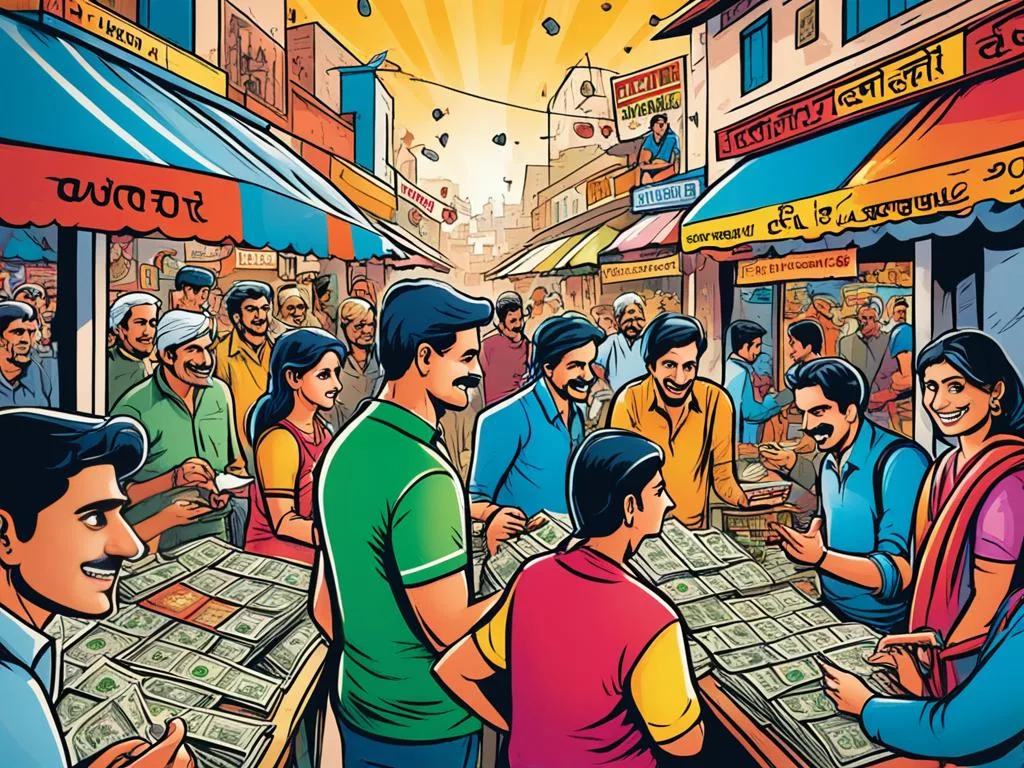In India, if you want to exchange currency, you need to know about FEMA from 1999. It explains how money transactions work1. People wanting to swap currency should know that they can, for most needs. But, there are some rules set by the government1. When you need to buy foreign currency for traveling, you have to go to authorized banks or money changers1.
If you’re traveling, you can buy up to $3000 in foreign currency each trip. Make sure to follow India’s currency rules, and declare any extra money1. Indians coming back from another country can bring back as much foreign money as they like. This is great for travelers and non-resident Indians. Remember to declare if you’re carrying more than allowed1.
Buying foreign currency in India for your trip is easy for amounts less than Rs.50,000. For larger sums, you’ll need other ways to pay1. When you return, you must exchange any leftover currency or traveler’s cheques within half a year. This keeps the foreign exchange process smooth1. You can keep foreign coins without any rules. Sometimes, you might need official permission for keeping them after certain travels1.
Understanding Currency Exchange in India
In India, exchanging foreign money is a big deal. It’s busy and follows strict rules. By April 2022, $7.5 trillion was being traded every day around the world. This shows how big the currency exchange scene in India is2. It’s important to know about the best places for currency exchange there. Daily, $2.1 trillion in spot transactions and $1.2 trillion in forwards are traded. This means a lot of money changes hands quickly or is set for future exchange. This affects the rates banks and travelers face2.
India’s foreign exchange history is quite interesting. In the early 1900s, countries were holding more foreign currency than gold. From 1903 to 1913, the amount of foreign money grew by 10.8% each year, compared to gold’s 6.3%2. This shows how important foreign currency has been for India’s economy.
India has specific rules for handling foreign money. People can freely buy or sell foreign currency for many needs3. But, you can’t send money abroad from lottery wins. When traveling, you can carry up to USD 3,000 in notes. If you bring more than USD 10,000, you must declare it. Coming back, you can have up to Rs. 25,000 in notes and must give back any unused foreign money within 180 days3.
Nowadays, people look for good currency exchange rates not just in stores but also online3. Websites and approved money changers help compare rates and fees. This can save money and time if you have the right papers.
Here’s a quick guide on limits and rules for currency exchange:
| Transaction Type | Limit in Foreign Currency | Limit in Indian Rupees | Remarks |
|---|---|---|---|
| Carry to most countries | USD 3,000 | – | Higher amounts in forex cards |
| Returning to India | – | Rs. 25,000 | Must declare if above USD 10,000 |
| Surrender unused forex | Up to USD 2,000 | – | Within 180 days of return |
| Forex transaction with cash | – | Below Rs. 50,000 | For payments above, other methods required |

Knowing the history, data, and rules of currency exchange in India is crucial. I’ve exchanged currency many times and can say it’s vital to stay updated. The RBI sets the framework for safe transactions. It’s up to us to follow the rules carefully. Whether you’re a business person, traveler, or just visiting, knowing about currency exchange helps manage your money and stay within the law23.
Guide to exchange currency in India
Before I exchange currency in India, I plan ahead by checking my travel and money needs. I do this a week before I leave. This helps me avoid high rates and fees at airport counters4. I look at different websites and banks, choosing ones approved by the RBI. They have good rates and keep my money safe4. For big amounts over Rs.50,000, I use official ways to pay. This keeps me right with the rules1.
I always have my Passport, PAN Card, and Aadhaar card ready. This makes sure I follow India’s strict money exchange laws1. When back from my trip, I return any foreign money I didn’t use within 180 days. But, I can keep up to USD 2,000 for next time1. I like to keep foreign coins as keepsakes from my journeys1.
I keep an eye on exchange rates, choosing the best time to swap money. This is vital during political or economic changes4. Using a forex card with several currencies on it saves money and hassle4. Knowing many tips for currency exchange always helps me get a great deal in India.

